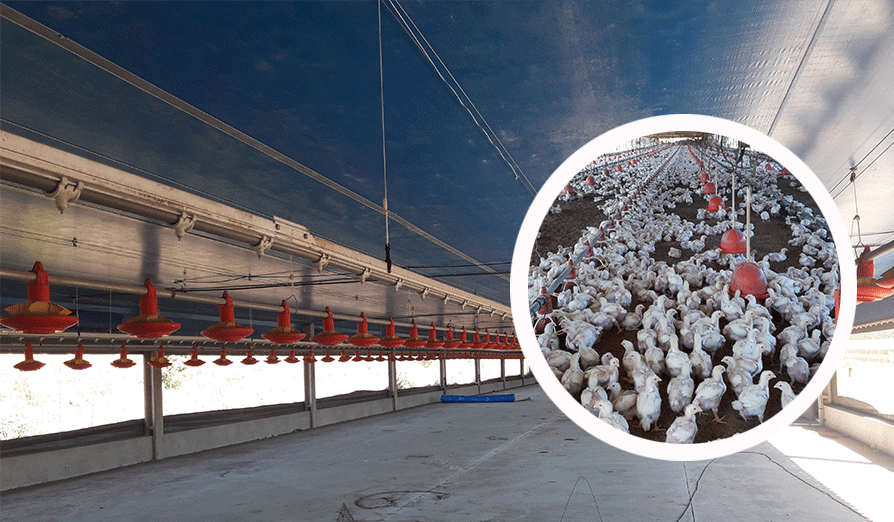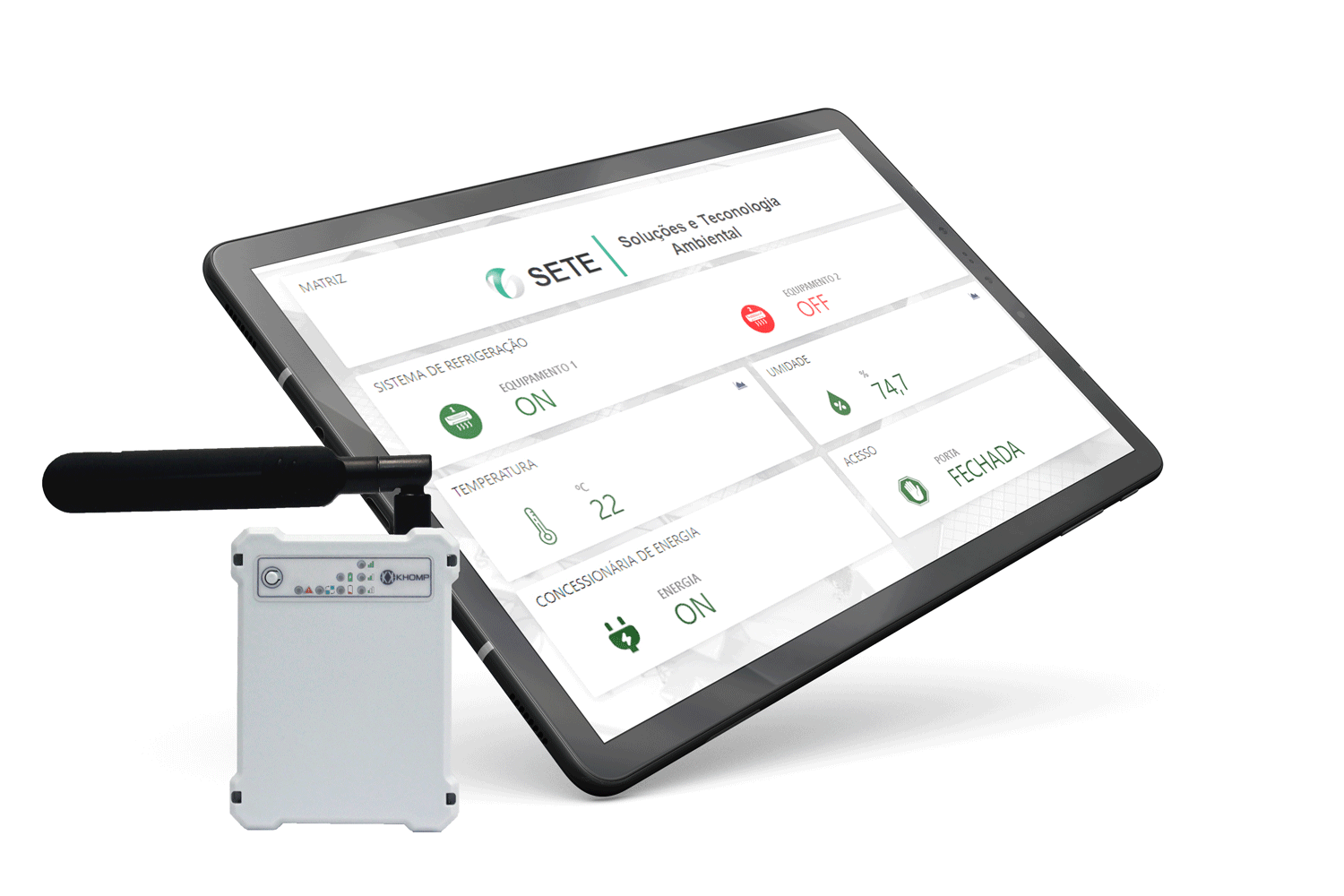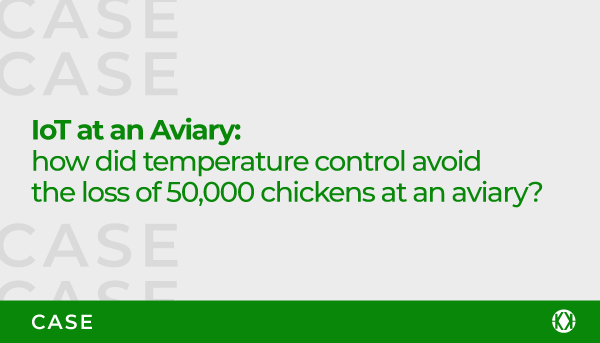The Brazilian poultry market is one of the most promising in the world. To get a good idea, the country’s principal exporters combine to sell almost 13 million tons per year. Moreover, it is believed that this number will only grow.
A look at this sector reveals extensive hangars in the poultry industry for raising chickens with an average capacity for monitoring the growth of up to 50 thousand birds per shipment
The case study we are going to look at analyzes how the Afonseca company, in conjunction with TagoIo and Khomp, developed an intelligent monitoring project for poultry industry hangars that uses IoT sensors to automate processes and prevent losses from human error related to temperature control.
The Challenge
The raising of chickens for the production of quality foodstuffs relies on a foundation supported by genetics, nutrition, the maintenance of sanitary conditions, management of fowl and temperature. Temperature is a critical piece of information because chicks need to be kept warm from the day they hatch, and as they grow the ideal temperature changes each subsequent week.
To summarize, a chick in its first weeks of life needs a higher temperature and an adult chicken needs a lower temperature.
At the poultry hangar in question, the temperature was measured with the use of a traditional thermometer. In addition, to gain a little more control, a key person comes into the picture: the “sentry”. The “sentry” is generally the professional who is responsible for conditions in these aviaries outside of regular working hours. This person spends the night making rounds from hangar to hangar manually checking the environmental conditions.

Temperature is the biggest challenge with this type of business because:
- Chickens need warm environments from the moment they are hatched in order to grow in a healthy manner;
- The period required to grow to full size is 42 days. During this period, the chicken is kept 24 hours a day drinking water and eating in an artificial environment that must have very precise favorable conditions (temperature, power and humidity);
- In the event of a power outage in the hangar, the ventilation system can turn off and, depending on the lot of chickens, they can all be lost in just 30 minutes;
- Other power failures can cause a sudden increase in temperature that can suffocate the chickens due to elevated concentrations of CO² and CO;
- And no matter how good the intentions of its sentries are, or how well a company implements its practices, human monitoring is still prone to failures.
The Solution
Afonseca installed a complete IoT system in its hangars, using the Khomp ITS 3G together with a TagoIO server. The ITS 3G is a standalone device that collects data including temperature, humidity, power and operations of the ventilation system in a pre-configured window of time (every 15 minutes, for example). For its part, the TagoIO server processes this data, issuing warnings and alarms in accordance with the situation.
In the hangars, this integrated solution was able to perform intelligent monitoring of the ideal temperature range each week. The system created different parameters in accordance with the growth of the fowl: during the first week, the temperature is “x”, during the second week “y”, and during the third week it was “z”. If anything out of the ordinary were to take place, warnings would immediately be generated by the Tago application and forwarded to the client via e-mail, SMS or Telegram.
Additionally, a script was used to perform more precise analyses of each situation. When power goes out, for example, the system begins to generate a continuous alarm every 5 minutes, warning about the need to take immediate action. Thus, there are different reactions designed to indicate different levels of urgency.

The Results
Phrases such as “I don’t think this hangar is in good shape, because it seems too hot” were commonplace before the implementation of the IoT system. However, what was once decided based on gut feeling is now based on data. Having this detailed information has been fundamental for identifying problems, finding solutions and increasing the production of chickens.
What’s more, the results attained after a year of continuous monitoring allowed for the discovery of patterns that were interfering with the quality of the final product. This has made it possible for the poultry producer to be more assertive in investment decision making.
Important results for the poultry industry:
- With sensors, the company was no longer exclusively dependent on a “sentry”, the professional who would monitor conditions by making rounds during the night;
- Control of temperature, humidity, power and operation of ventilators in multiple hangars is done in real time;
- Thus, the risks in this type of production, in which a host of details can impact the quality and profitability of the shipment, are reduced;
- And there is a greatly increased sense of security with the knowledge that warnings are sent in the event of any type of failure in the system of refrigeration and heating;
- There is also the added benefit of ease of operation, because it became possible to have information right in hand, via application, wherever the person responsible may be.
Read more about the ITS 3G and other solutions from Khomp by clicking here or by talking with one of our specialists by email at: sales@khomp.com
Read more about the complete ecosystem of IoT TagoIO solutions by visiting their website or by sending an e-mail to contact@tago.io
